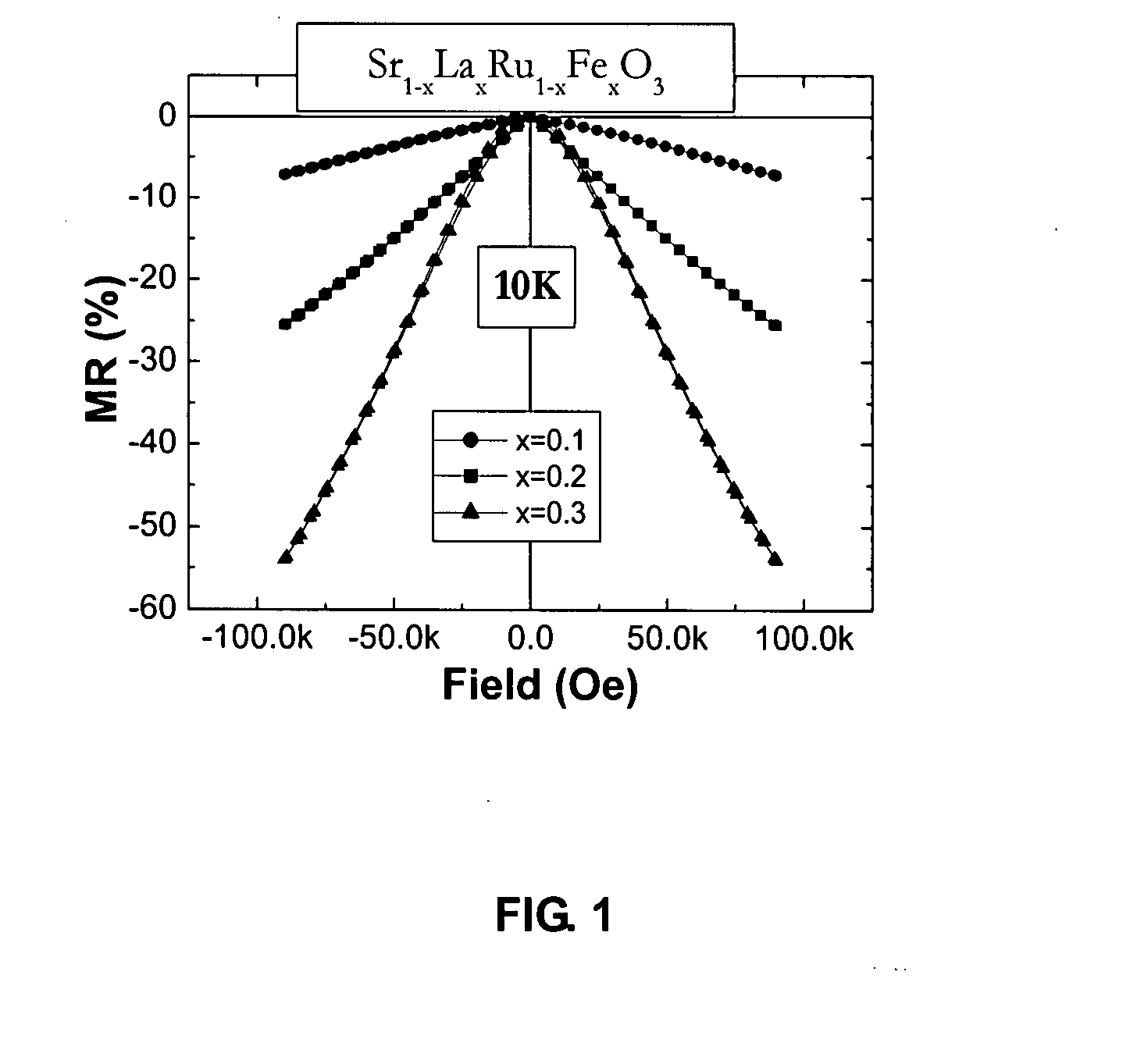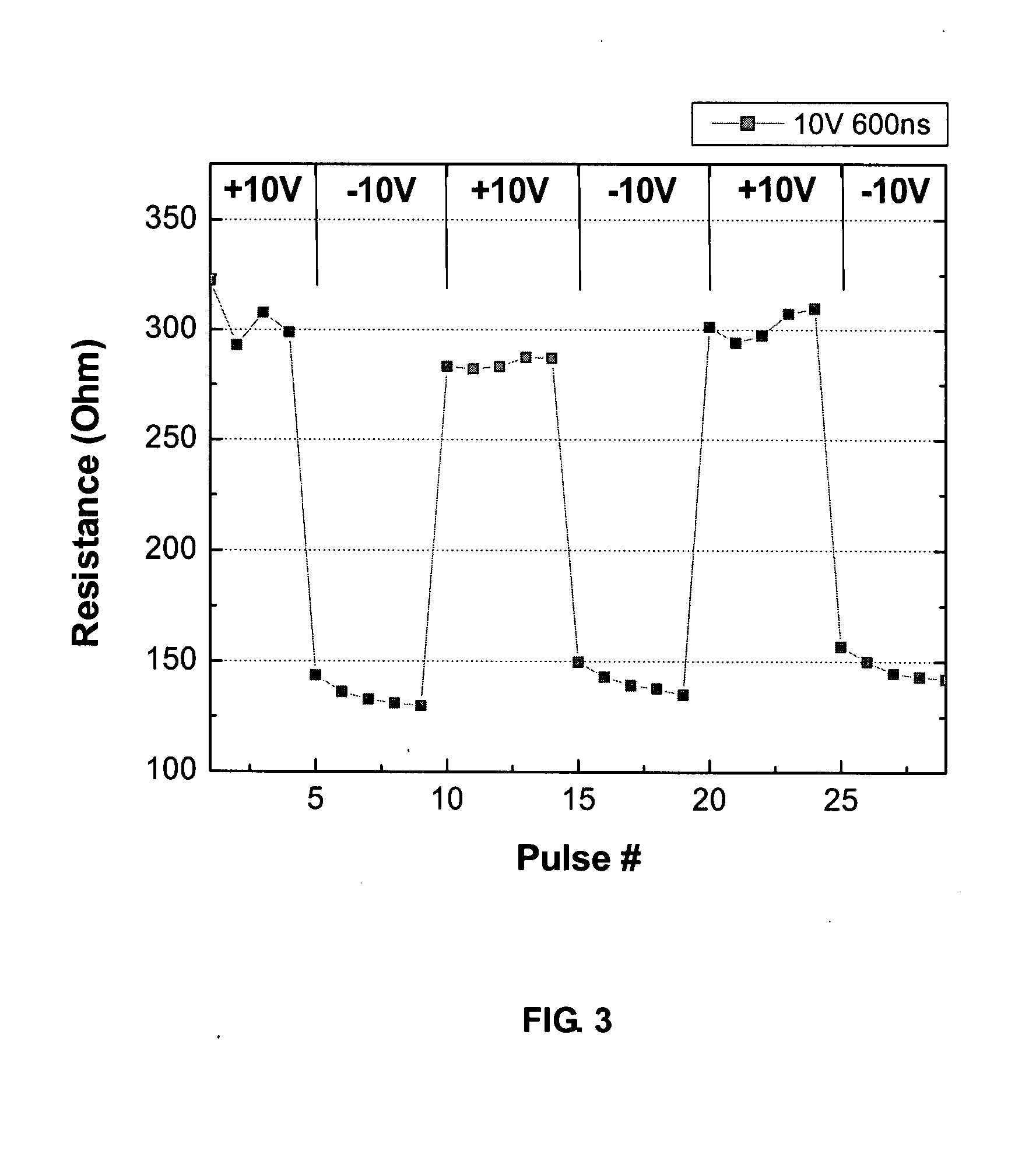Magnetically-and electrically-induced variable resistance materials and method for preparing same
a magnetic field and variable resistance technology, applied in the field of magnetic field and variable resistance materials, can solve the problems of indestructible data storage, hysteretic resistance response to magnetic field, limited manganate mr,
- Summary
- Abstract
- Description
- Claims
- Application Information
AI Technical Summary
Benefits of technology
Problems solved by technology
Method used
Image
Examples
example 1
Large Negative MR and EPIR in B-Site-Fe-Doped Ruthenates
[0056]Sr1-xLaxRu1-xFexO3 series—Magnetically glassy Fe-doped ruthenates of perovskite and layered perovskite can be derived from a parent compound that is either magnetic or nonmagnetic. In this example, the materials were obtained by alloying FeO6 octahedra into parent ruthenate compounds that are metallic. These parent compounds are either ferromagnetic (SrRuO3) or paramagnetic (CaRuO3 and Sr2RuO4) and their structures are either perovskite type (SrRuO3 and CaRuO3) or layered perovskite type (Sr2RuO4). Since octahedral Fe3+ ions in perovskite-type structures are known to couple antiferromagnetically, magnetic frustration easily arises in a randomly Fe-alloyed BO6 network, resulting in a spin glass. The resulting large negative MR that is observed appears to be associated with the Fe impurities which operate as atomic-scale “spin valves,” allowing electrical current to pass through when the spatially adjacent electronic states...
example 2
Solution-Polymerization Method for the Synthesis of Ruthenate Compounds
[0066]Polycrystalline samples of SrRuO3 and mixed ruthenates were prepared by conventional ceramic process and two sol-gel processes. These methods are described below using SrRuO3 as an example. Phase homogeneity was verified by means of powder x-ray diffraction (XRD) and magnetic measurements
[0067]Ceramic Process—In the ceramic process, a stoichiometric mixture of SrCO3 (99.99%, Alfa Aesar, Ward Hill, Mass.) and RuO2 (99.95%, Alfa Aesar) was prepared and calcined in a platinum crucible at 900° C. for 12 hours. After that, powders were reground, pelletized, packed in sacrificial powder of SrRuO3, and heated at 900-1300° C. for 12-96 hours, with intermediate regrinding and examining by XRD measurements every 12 hours to follow the progress of reaction. The XRD measurements were conducted using CuKα radiation, and the XRD patterns of the SrRuO3 samples prepared by the ceramic route are shown in FIG. 10.
[0068]After...
PUM
 Login to View More
Login to View More Abstract
Description
Claims
Application Information
 Login to View More
Login to View More - R&D
- Intellectual Property
- Life Sciences
- Materials
- Tech Scout
- Unparalleled Data Quality
- Higher Quality Content
- 60% Fewer Hallucinations
Browse by: Latest US Patents, China's latest patents, Technical Efficacy Thesaurus, Application Domain, Technology Topic, Popular Technical Reports.
© 2025 PatSnap. All rights reserved.Legal|Privacy policy|Modern Slavery Act Transparency Statement|Sitemap|About US| Contact US: help@patsnap.com



